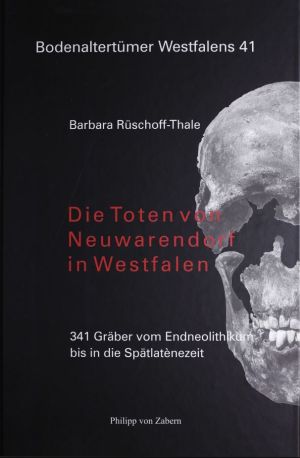
How to Cite
License

This work is licensed under a Creative Commons Attribution-ShareAlike 4.0 International License.
Published
Downloads
Die Toten von Neuwarendorf in Westfalen
341 Gräber vom Endneolithikum bis in die Spätlatènezeit
From 1975 to 1987, the largest contiguous burial ground of the Bronze and Iron Ages (3000 to 50 B.C.) in northwestern Europe was archaeologically investigated in Warendorf-Neuwarendorf. On an area of more than eight hectares, 341 graves were uncovered, only nine were inhumations. Hence, by far the largest part of the graves are cremations, marked above ground with mounds and ditches. The largest are 35 meters long. In some enclosures, archaeologists also found remains of elaborate wooden structures. A road about ten meters wide led through the cemetery, along which many of the more elaborate burial complexes were aligned. The analysis of the features and finds, anthropological investigations and scientific dating led to the identification of five occupation phases.
Of particular interest was the relatively frequent evidence of re-opened graves, which indicates on the one hand ritual grave openings and on the other hand robbery.
This thesis was accepted as a dissertation at the Westfälische Wilhelms-Universität Münster in 2003.






